How fast do Silkie chickens grow

At what age are Silkies full grown?
Silkie hens or pullets generally mature around 8-10 months and cockerels about 10-12 months. They hit their full size around 4 to 5 months and get their first real adult set of feathers about this time as well.
All chicks go through three partial and one full moult before they mature.
Below: Fully grown Silkie hens around 6 months of age.
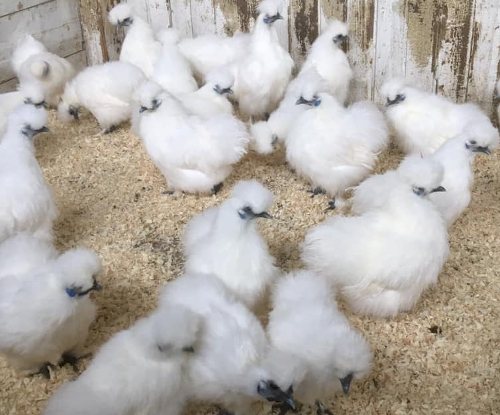
Silkies are one of the most variable breeds I have ever raised, sometimes you will see pullets lay as early as 6 months and with some it may take 12 months or more.
As a general rule, the better quality birds you are dealing with, the longer you have to wait.
Do Silkies grow slowly?
Yes, they grow and mature much slower than most chickens and A hatchery quality Silkie will grow and mature faster than a breeder or show quality bird.
Silkies do grow more slowly than most other breeds with the possible exception of Jersey Giants which often take more than 12 months to fully grow. Heritage chickens grow slower than hybrids and Silkies are some of the slowest maturing of all chickens.
This also makes sexing Silkies much more difficult than ordinary chickens as their secondary sexual characteristics develop later as well.
Why do some Silkie chicks seem to grow so fast and other so slow?
Different breeders have different selection criteria and methods. Happens in all breeds. These birds are selected for their final appearance and not how quickly they get there.
It also takes time for Silkies to feather up properly so you should never cull or select breeding birds to early or breed from young birds that may develop a fault at a later stage.
When does a Silkie typically start laying?
It is perfectly normal for a Silkie pullet to take 6 to 9 months to start laying eggs. My pullets usually start laying around 8 months or so, but I have a slower developing line.
How long it takes Silkies to start laying eggs depends on various factors:
- When they were hatched - Time of year is critical. Chicks hatched in late summer mature in short day conditions.
- How they are raised - Artificially raised chicks benefit from standard controlled conditions and longer light hours.
- Breeding selection - In my experience breeding stock is slower to mature.
The earliest I have ever had a Silkie hen lay an egg is a few days over 5 months of age.
When will Silkie roosters start crowing?
My roosters usually crow around 6 months, but I have some that wait longer if they are not an alpha cockerel. Their crow is pretty much like a regular standard breed's crow and when they do first start to crow it sounds like someone is messing around with a Kazoo.
The cockerels crow at different ages depending on their status. I have had one crow at 6 weeks and another that didn't crow till he was about 8 months.
Age Progression of Silkie Chicks?
All Silkies seem to go through an awkward ugly stage, but they look like they will blossom into beautiful puffballs in about 2 or 3 months. Below is a rough guide of how Silkie chicks look as they grow to be adults.
Bear in mind there will be considerable variation even amongst birds that were hatched together.
A detailed chart of Silkie chick growth from hatching day to six months of age:
Below: Silkie chicks drying in the incubator:

Below: Some day old Showgirl Silkies.
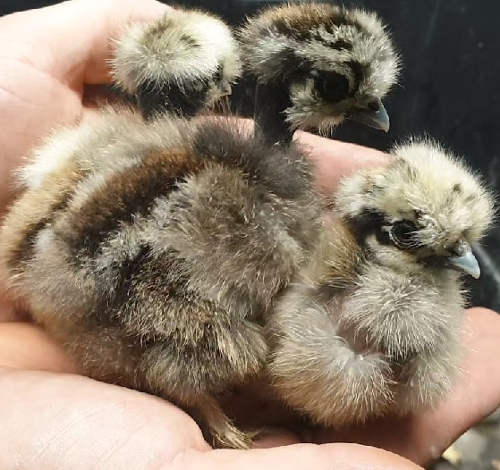
Day old chicks are just the cutest and Silkies are possible the cutest of all.
Below: 3 day old Silkies.
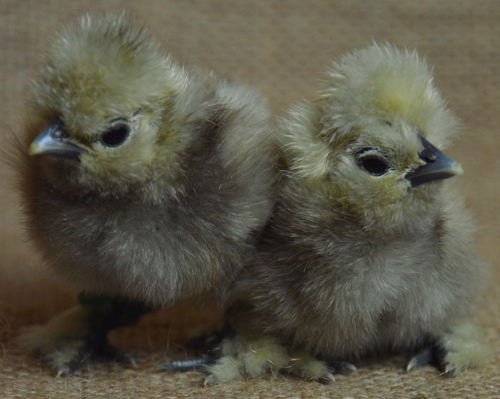
Below: A clutch of Silkie chicks at 3 to 5 days old.
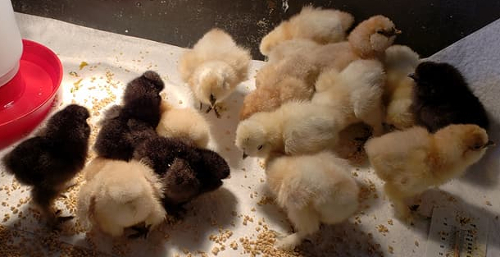
Below: Week old Silkies. You can see the variety in the growth rates.
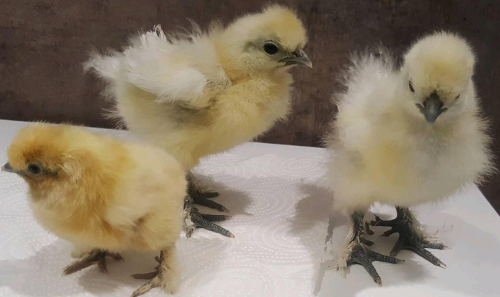
Below: About 7 to 10 days.
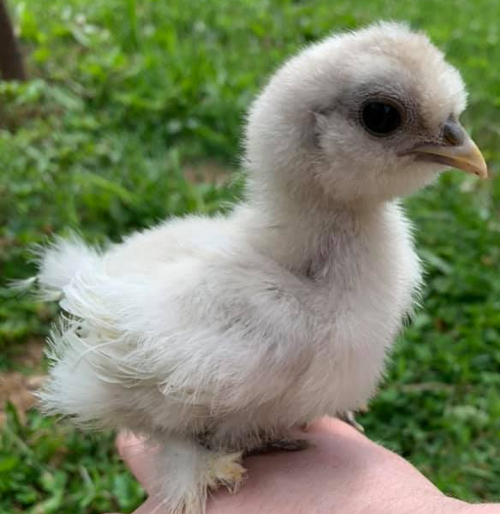
Below: A Silkie at around 3 weeks old.
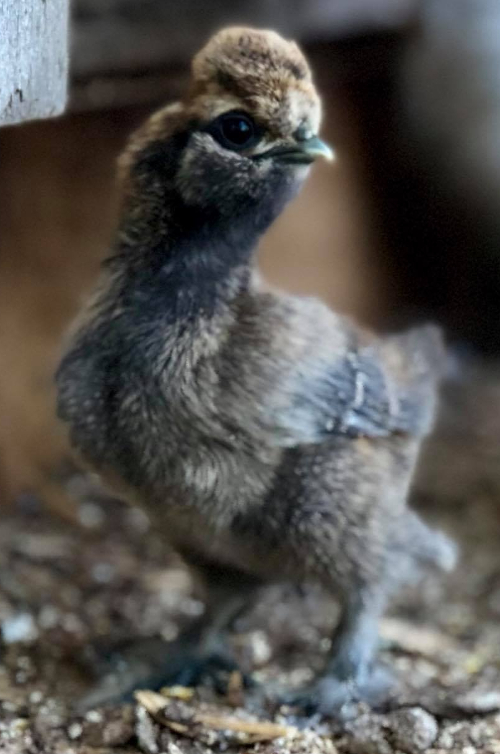
Below: Approaching 4 to 5 weeks old.

Below: 5 to 6 weeks of age.
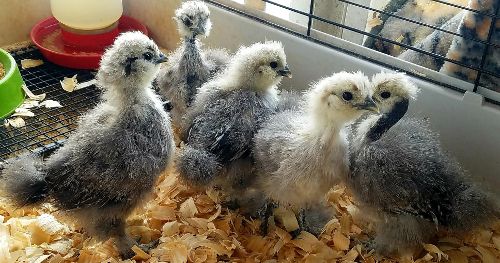
Below: 8 to 10 week old Silkie growers.
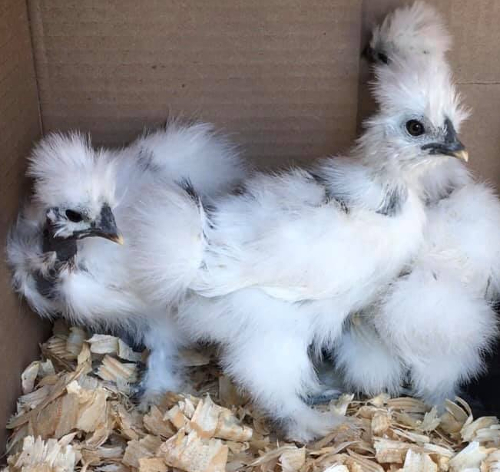
Below: A 12 week old Silkie.
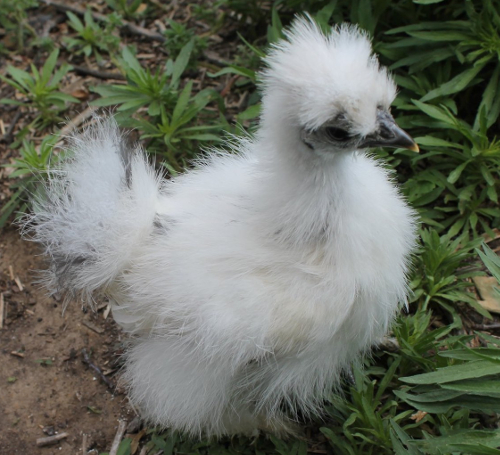
Below: Silkie at 14 weeks.

Below: A full size but not quite mature Silkie Point of Lay at 16 to 18 weeks.

What to feed Silkies to make them grow faster?
A balanced diet of medicated chick crumb with some treats and greens. Treats should always be less than 5% of the diet.
They shouldn't be outside until they have all their feathers and have lost their fuzz. Chicks getting cold may stunt their growth and make them unthrifty.
Also just keep in mind that heat lamps can be very dangerous, I've read on these sites several times where people's coops have caught fire.
I kept mine is a 30 gal Rubber-maid tote and I used a heat-lamp until they got big enough to go outside, once they got big enough to jump out or on the sides, I put chicken wire on top of the tote or some people use a baby gate or wire rack to keep them in.
